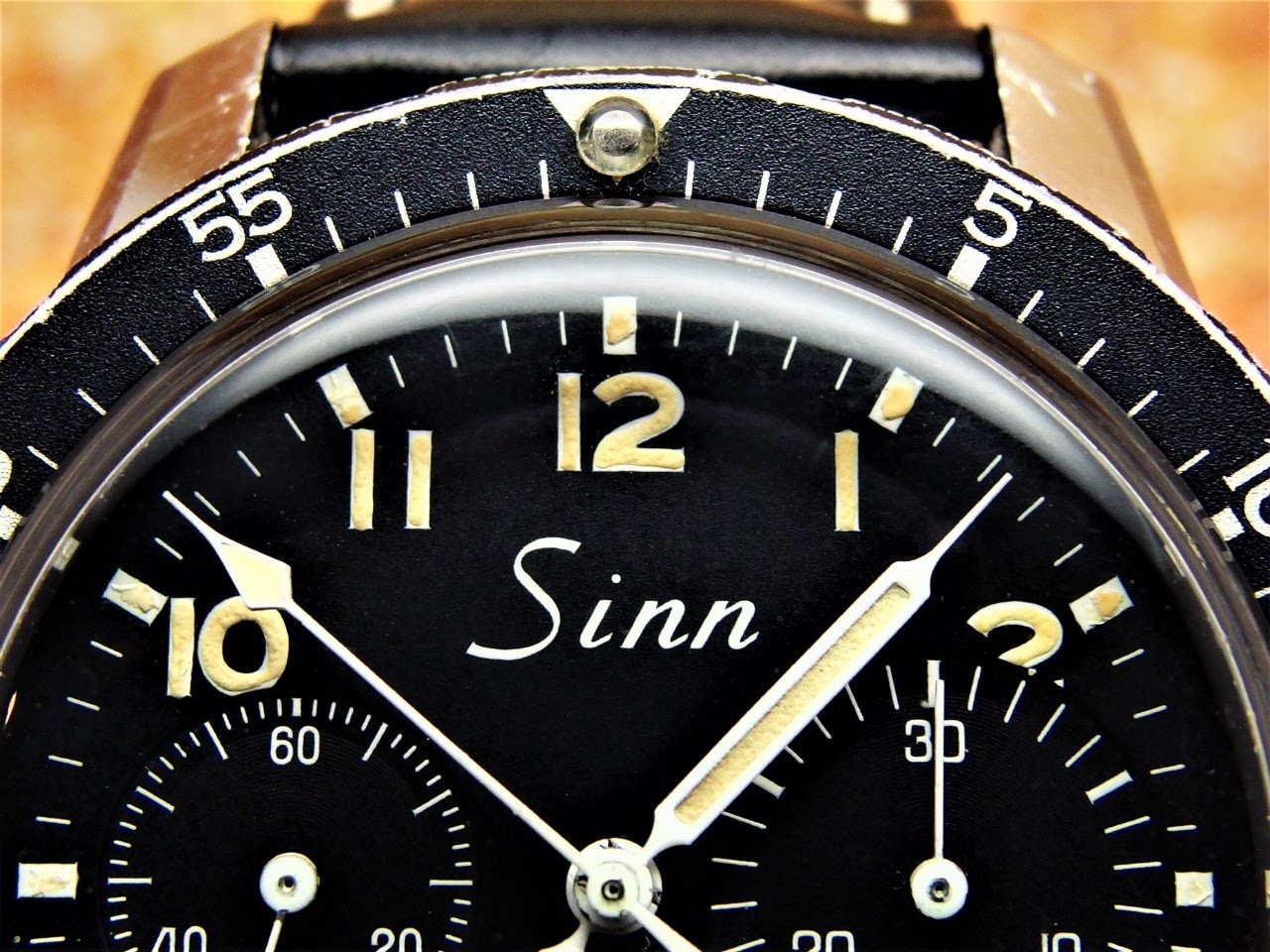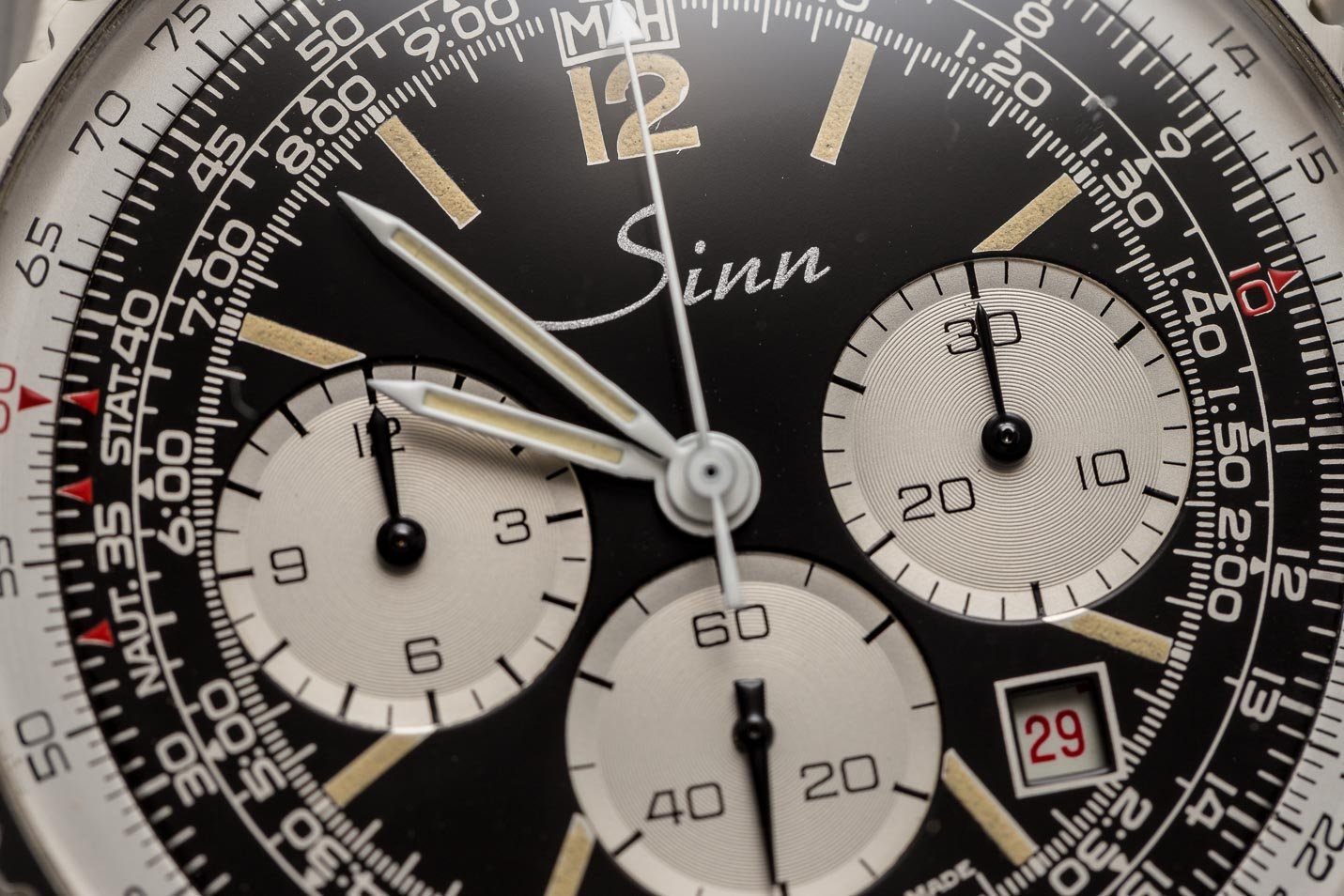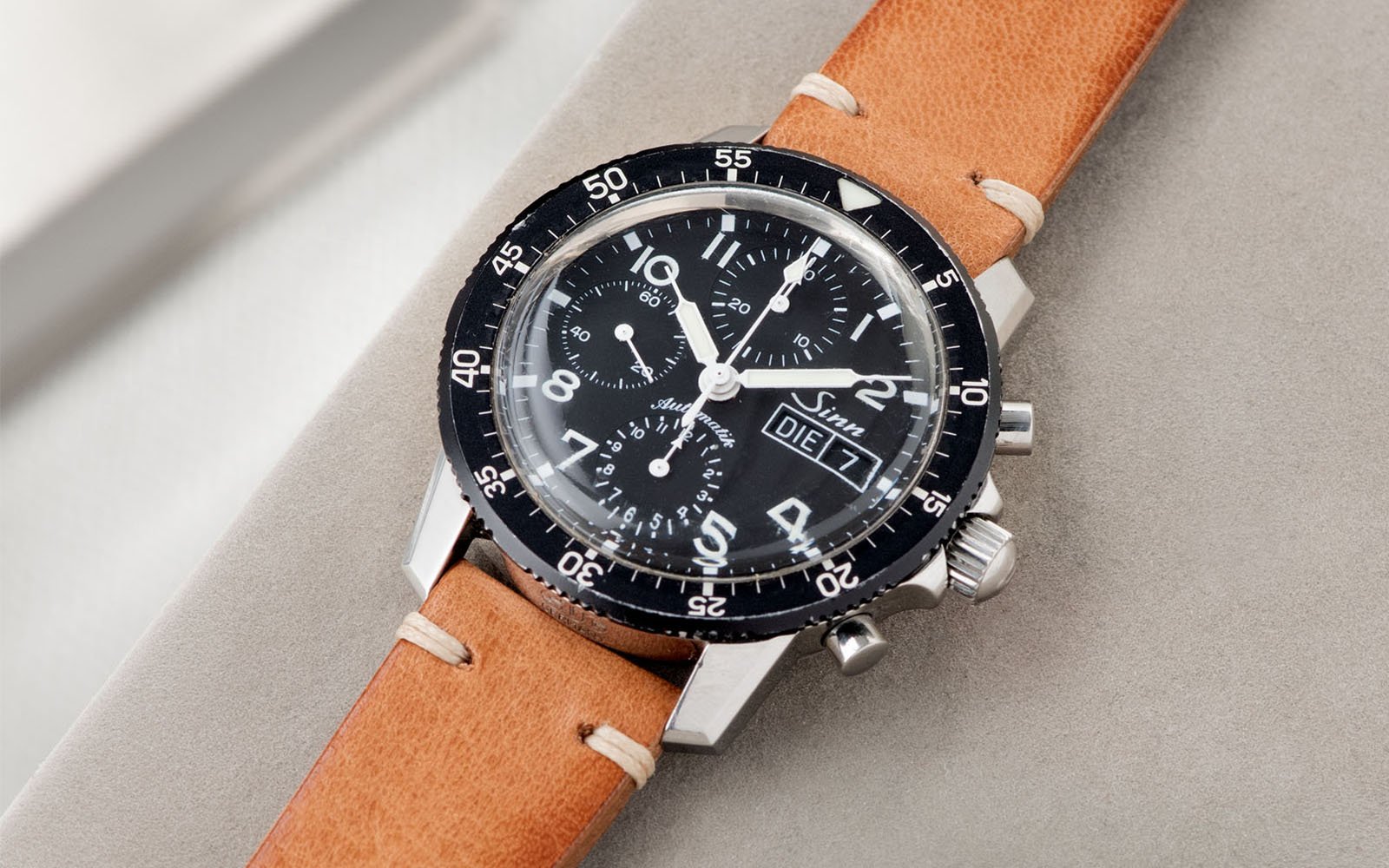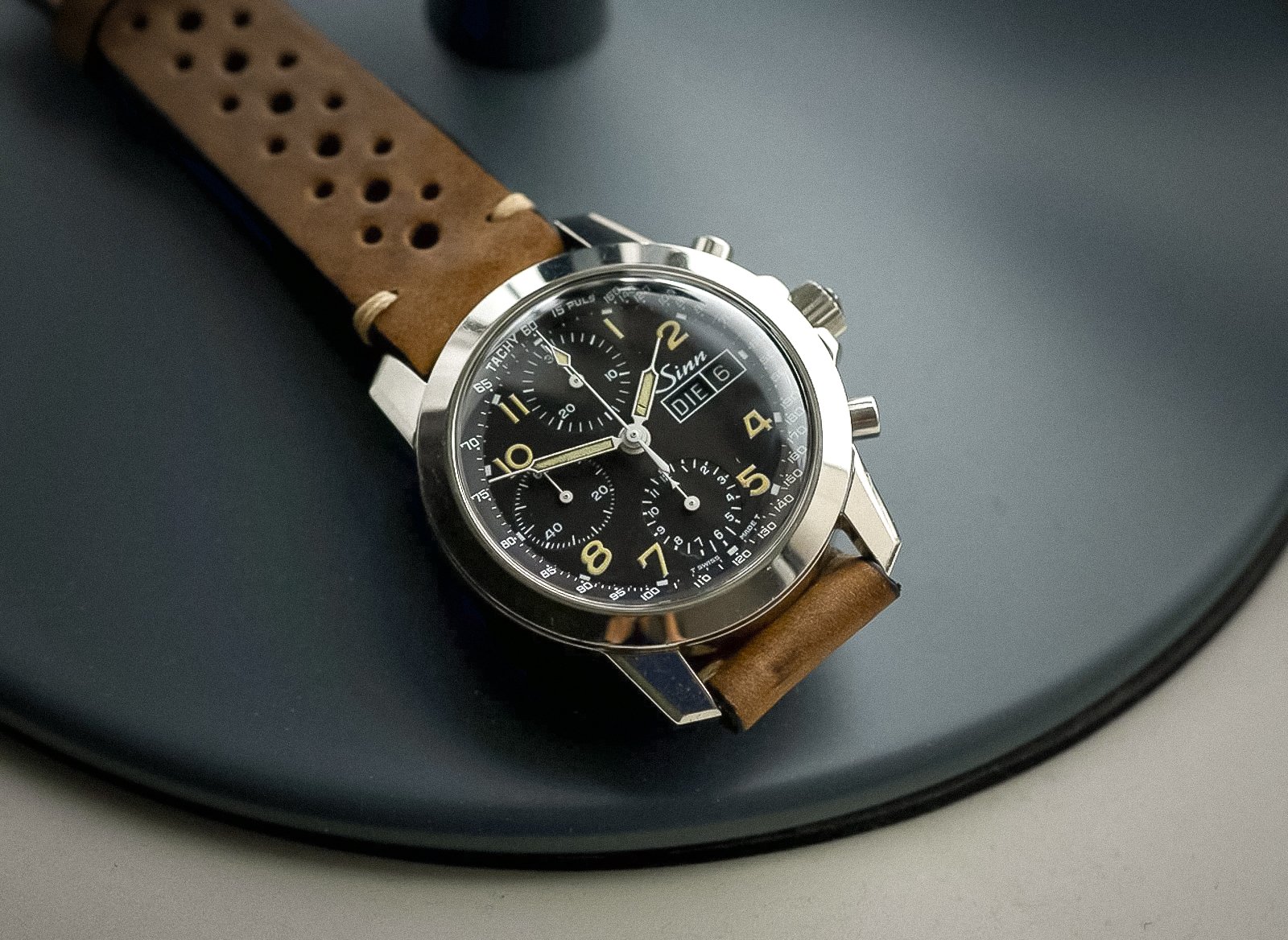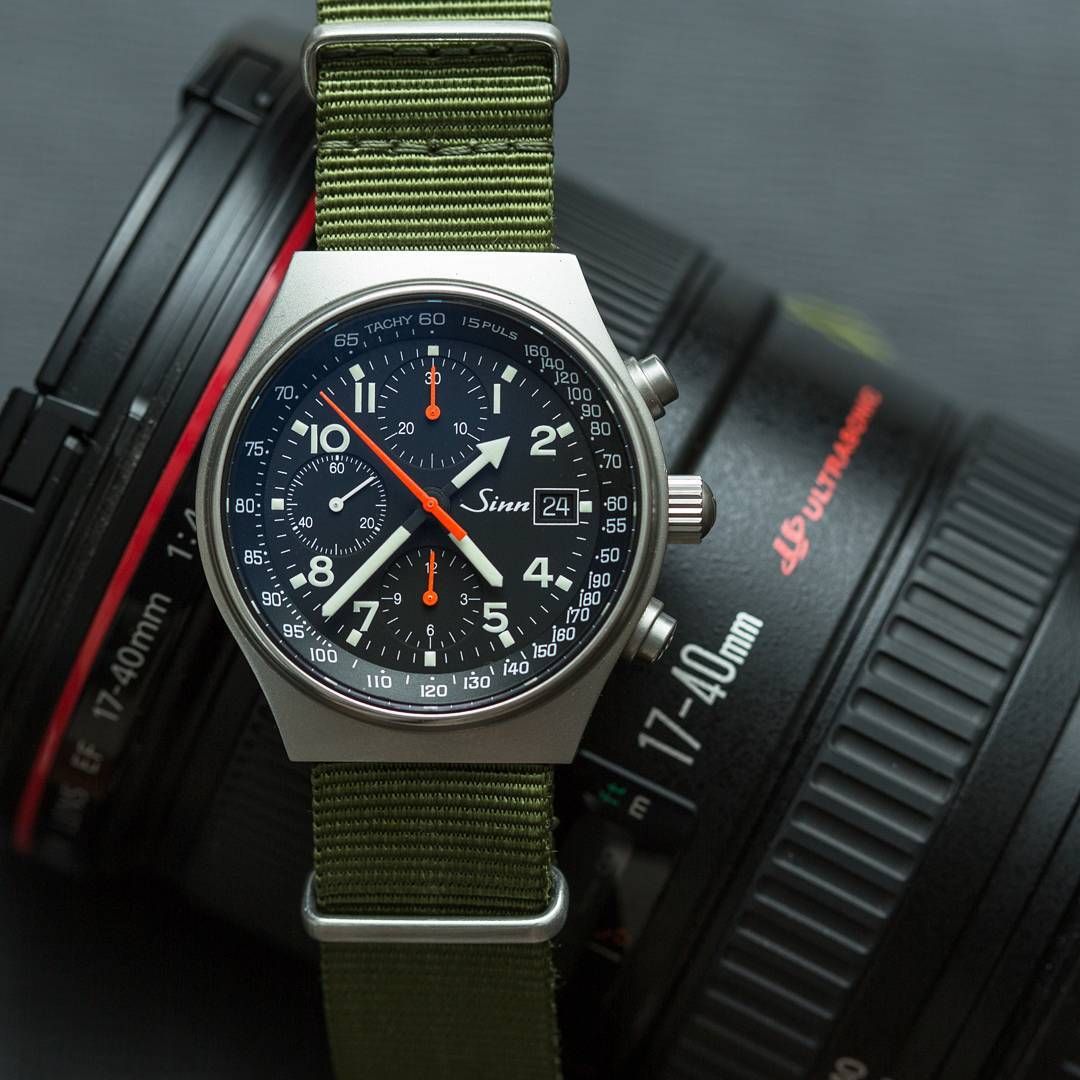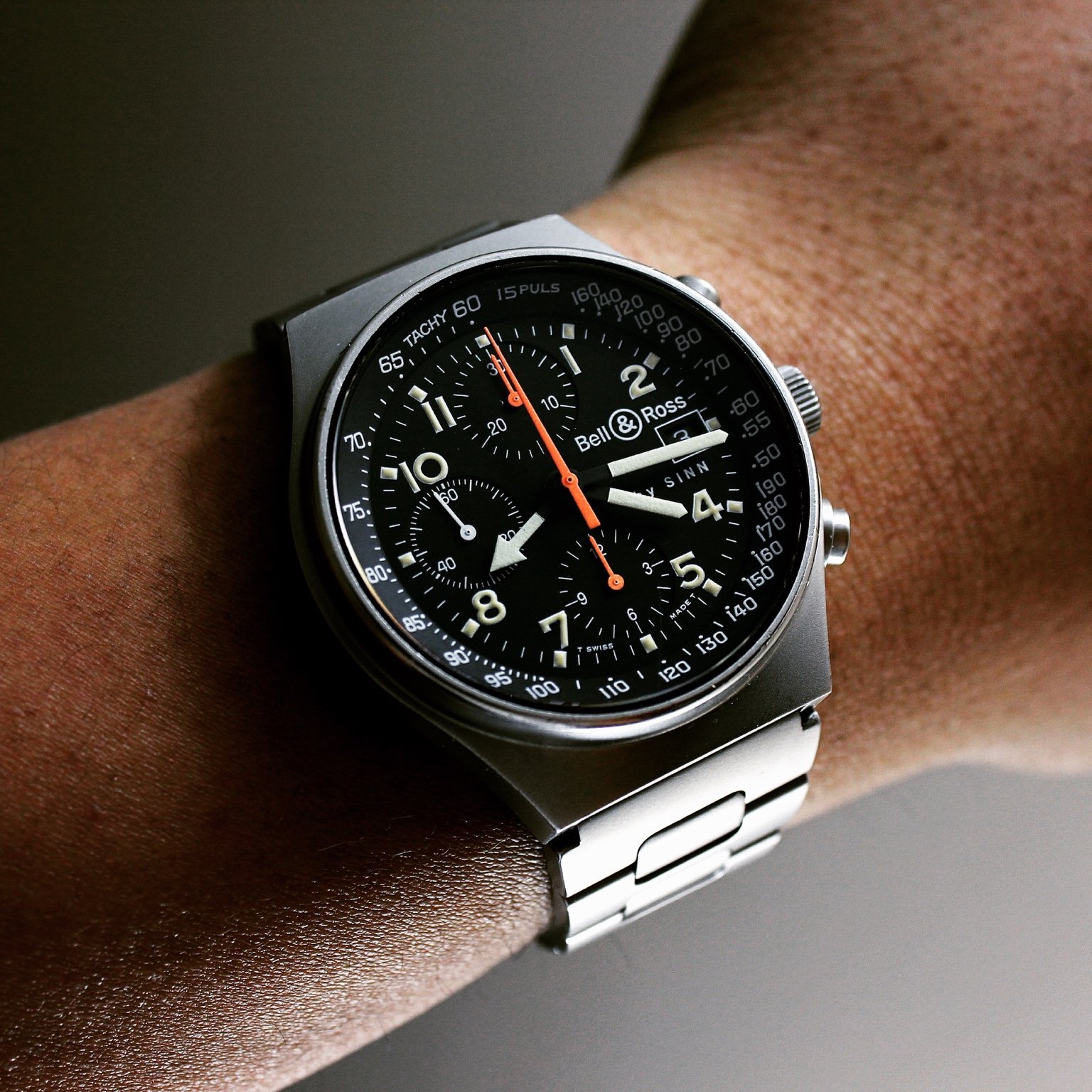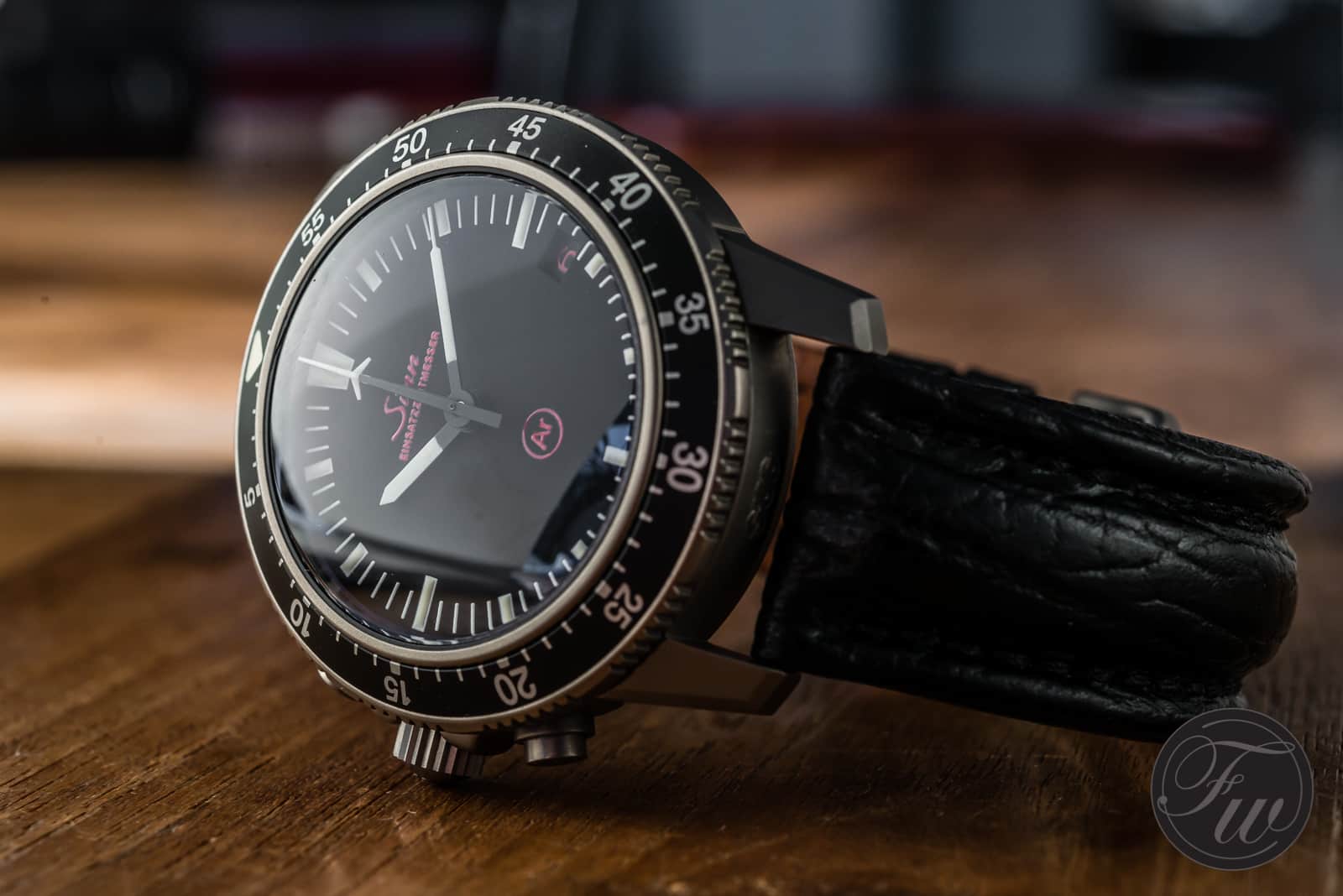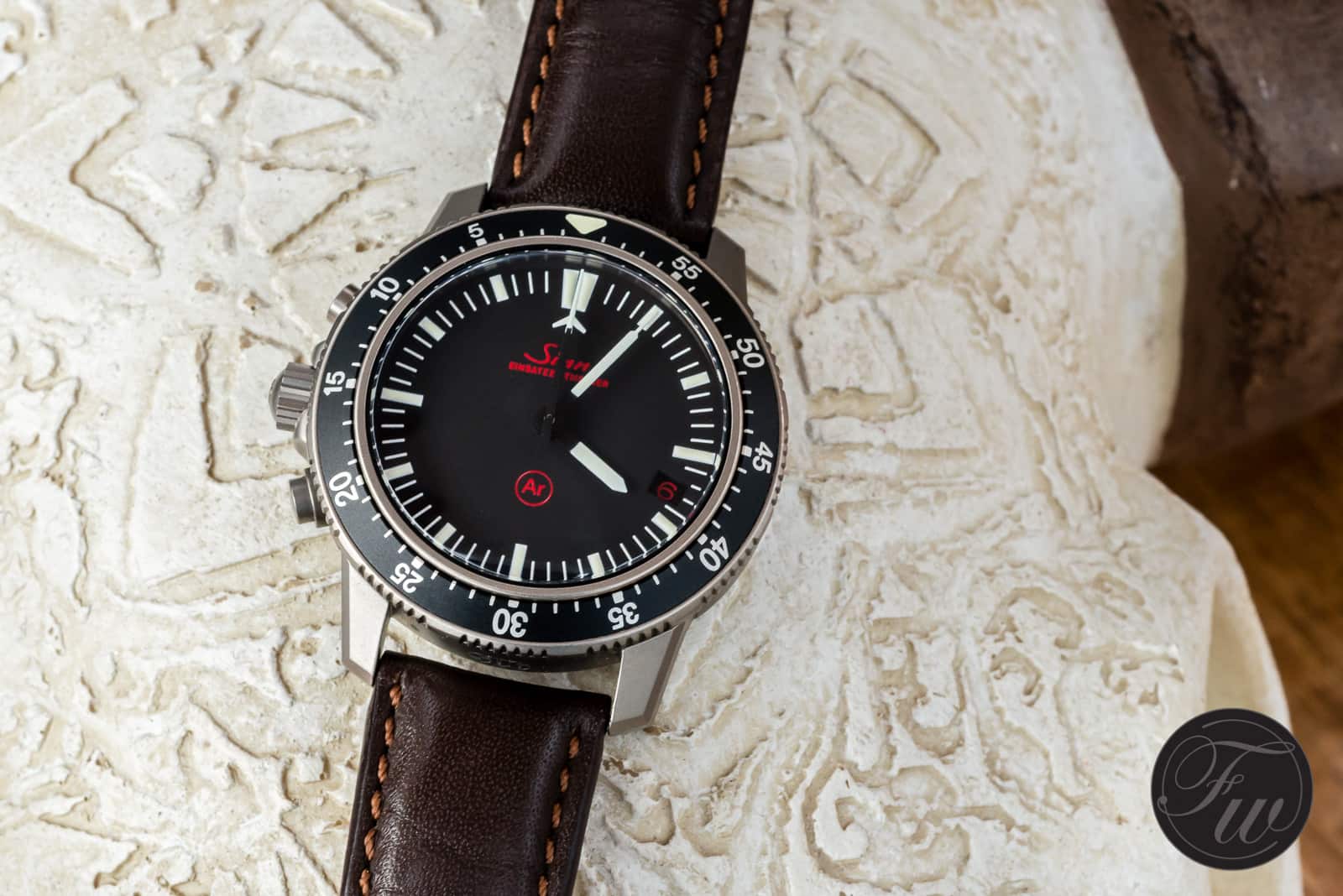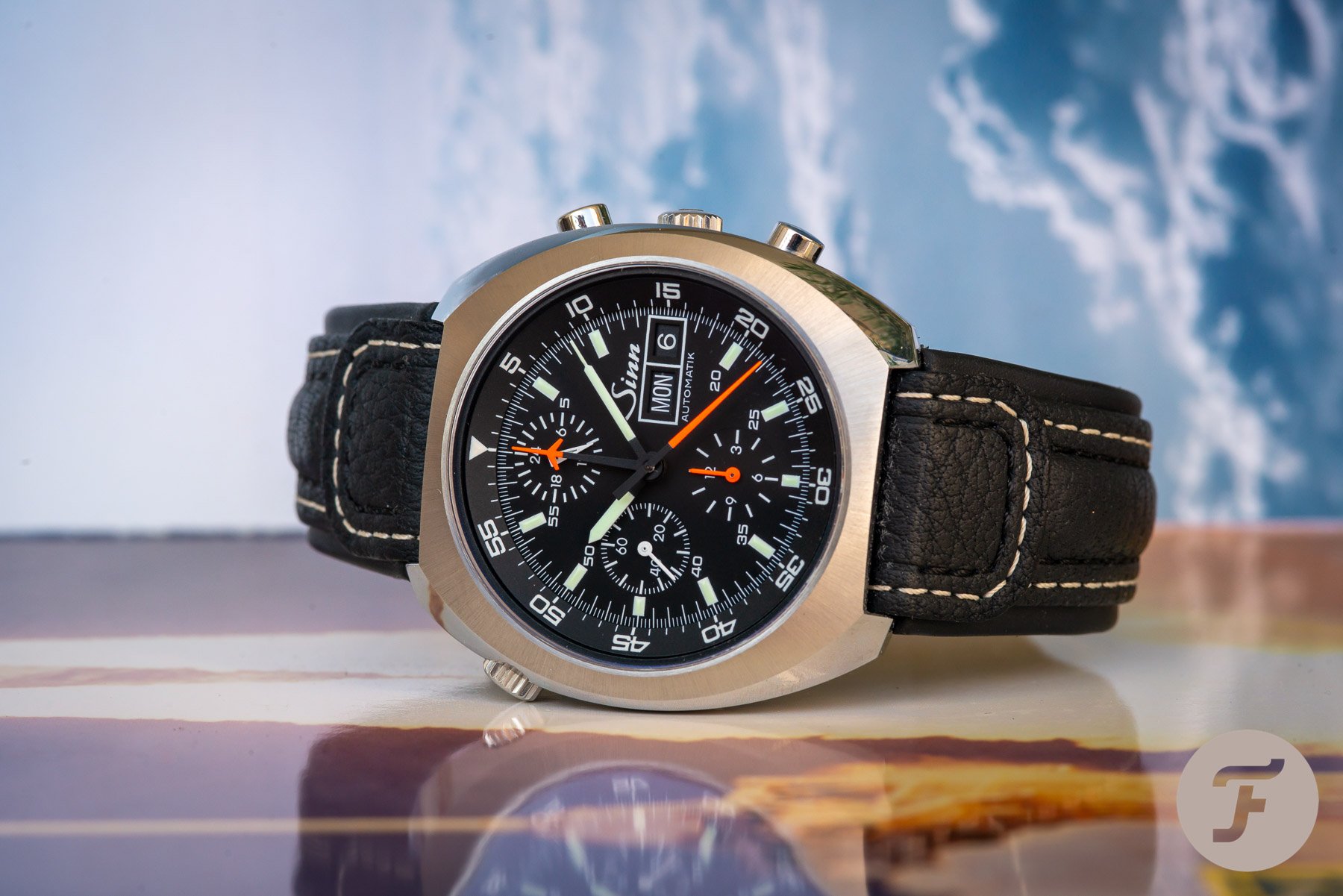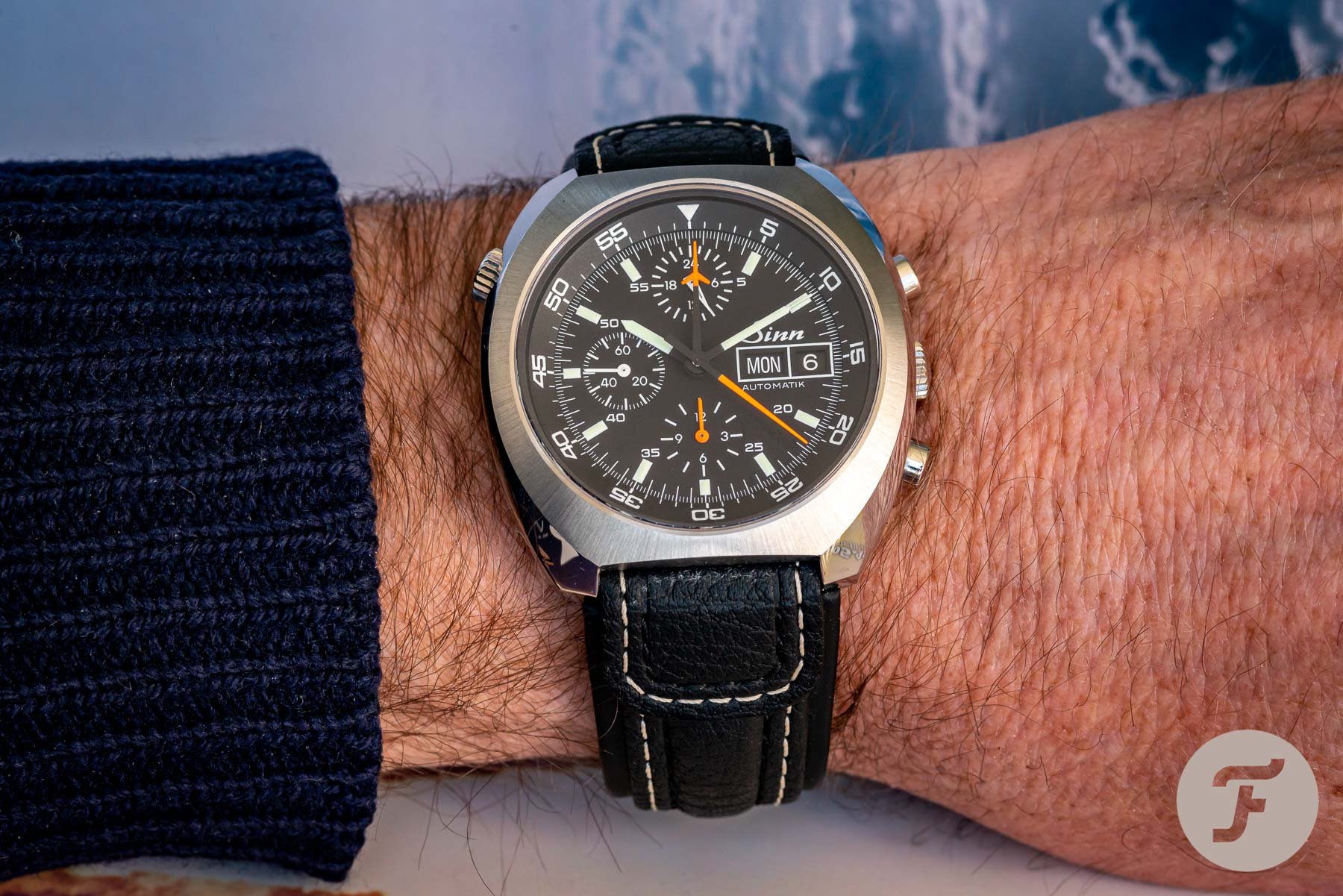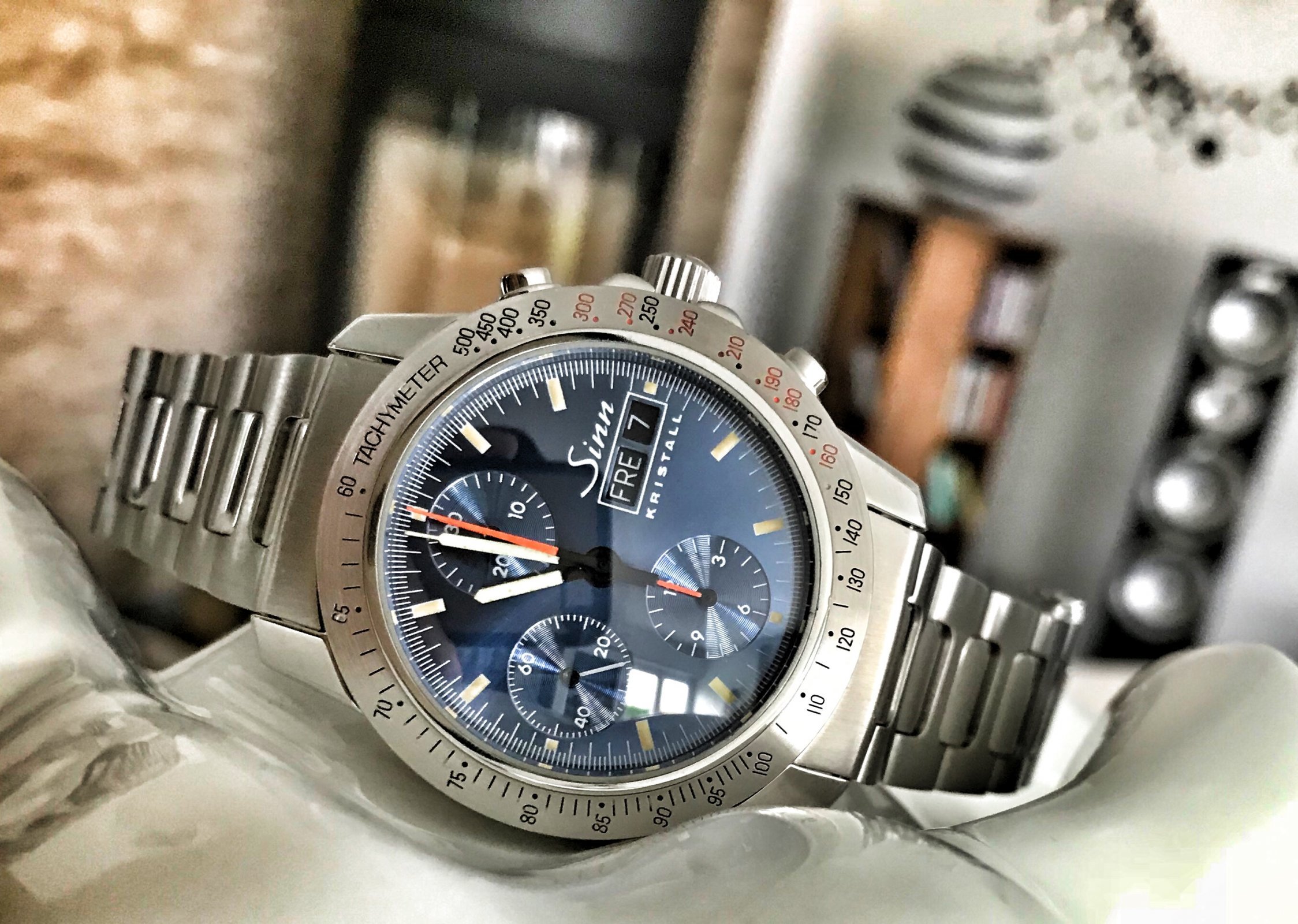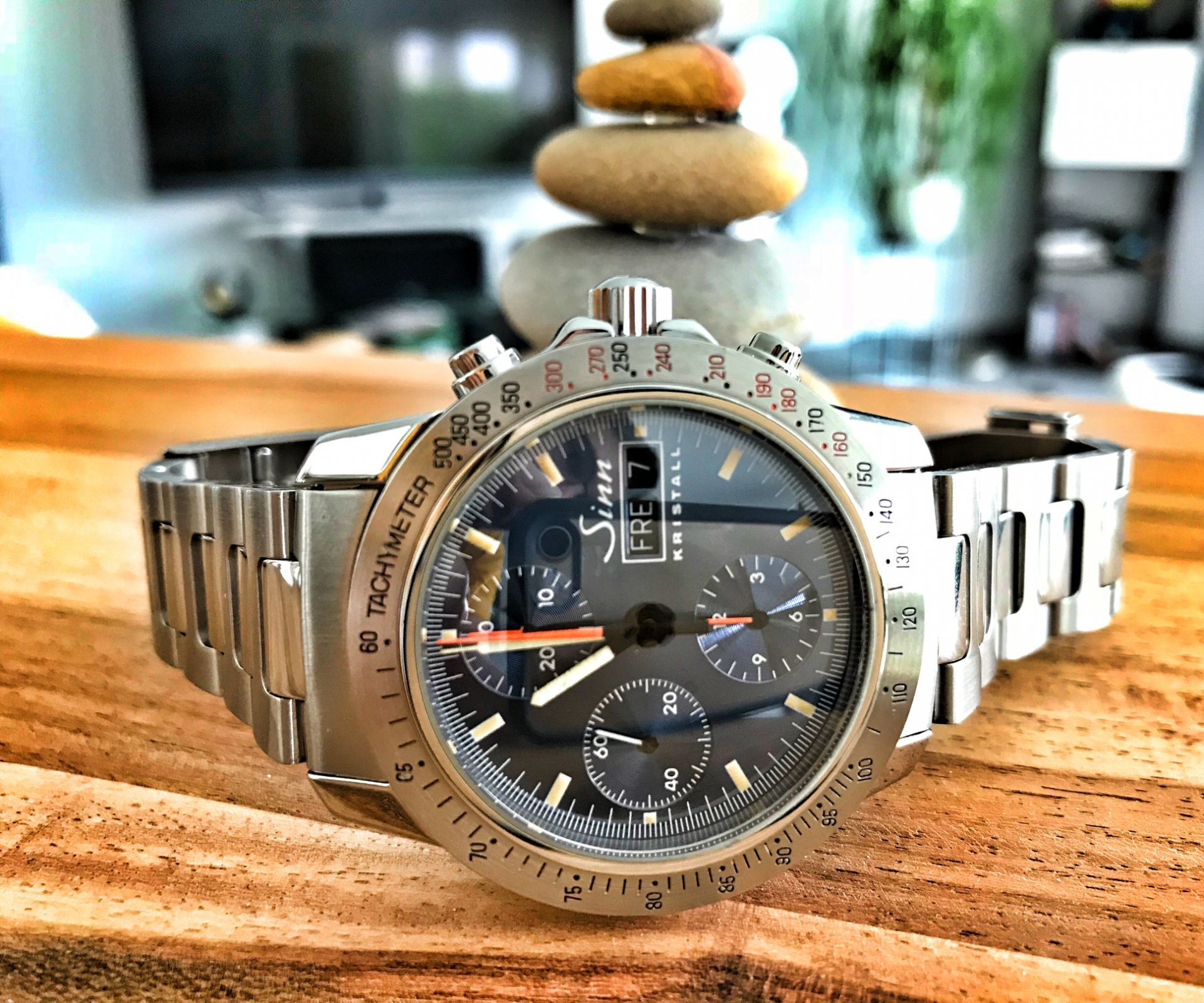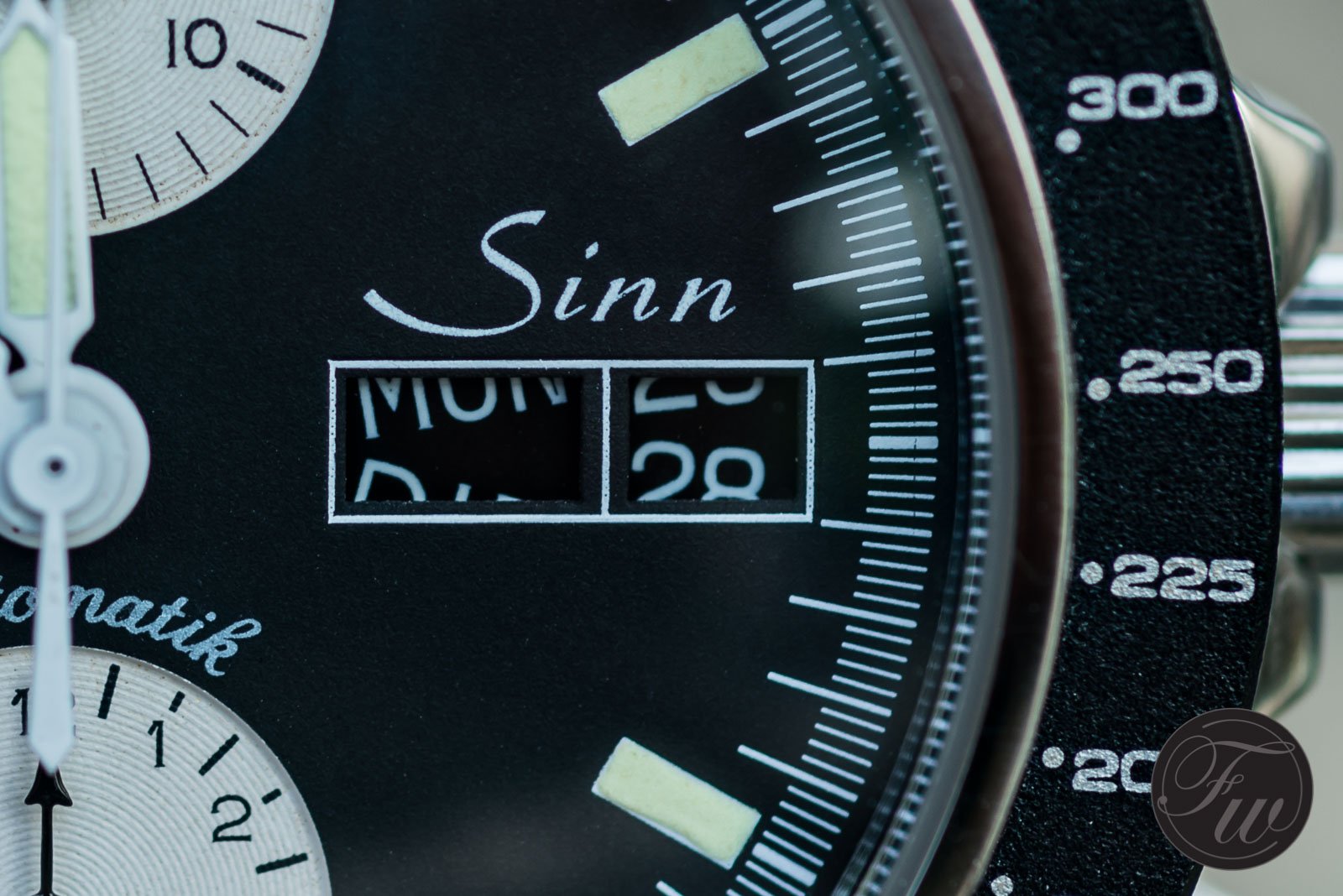Buying Guide: The Best Sinn Watches From The 1990s
We like to talk about vintage watches a lot within the Fratello team. Though most of what we write about is primarily focused on the most recent releases and developments, for many of us, a lot of the fun can be found in the sometimes weird and often wonderful world of vintage watches. It’s a world full of history, remarkable watches, incredible stories, and quirky details. It inspired us to come up with a series of articles focusing on the best watches per decade from a select group of brands. Some of them are priceless, and some of them are still affordable. In this installment, we will take a look at the best Sinn watches from the 1990s.
This week we will continue our journey through watch history to find the best watches from the 1990s. As I have mentioned in the previous articles discussing the best watches from the 1980s, mechanical watches slowly started making a comeback in that decade. By the time the 1990s began, quartz was still dominating the watch industry. But you could slowly see the two finding space next to each other.
With the gradual rise in the popularity of mechanical watches, we also saw a shift in perception. Mechanical watches became a luxury statement produced by prestigious brands with centuries of watchmaking history. It set them apart from the mass-produced, cheap, quartz watches. This luxury status was further backed up by a renewed interest in watches with classical complications. Combining the rich history of watchmaking with technical masterpieces set mechanical watches apart from the fast world of quartz watches once and for all.
Sinn over the decades
This is the first time we’ve featured Sinn in this series, so it will be good to briefly discuss the brand’s history in the decades prior. Sinn was founded in Frankfurt in 1961 by Helmut Sinn under the name Helmut Sinn GmbH. Sinn himself was a former World War II pilot and an instructor for blind flight. When he started, he used his past experience in aviation to develop pilots’ chronographs and navigation clocks. He marketed them as watches and rally instruments, which were another passion of his. Since aviation was off-limits to Germans due to World War II, Sinn had to choose a different approach.
Over the next three decades, Sinn introduced some remarkable watches. The most iconic one is, without a doubt, the Sinn 103. It was introduced in the late 1960s and has seen some amazing variations. The vintage Sinn 103 models with manual winding Valjoux 72 and Valjoux 726 movements are especially great classics. Along with that, Helmut Sinn secured the rights from Breitling to produce a timepiece with a slide rule, a logarithmic bezel that also functions as a chronograph. The result was the iconic Sinn 903. When Willy Breitling sold his grandfather’s company and its machinery in 1979, the Navitimer went out of production. The Sinn 903, with its striking resemblance to that classic watch, became an instant hit.
In the 1980s, Sinn made a name for itself as part of the D-1 space lab mission in 1985. Professor Dr. Reinhard Furrer, a German physicist, wore the Sinn 140 S on his wrist during the mission. During the time in space, the watch performed flawlessly, giving the brand a great reputation. If a Sinn could survive space, it could surely face any challenge on Earth.
Sinn in the 1990s
When the 1990s rolled in, Sinn had slowly built a name with the hardcore watch crowd. At that time, Sinn was still a relatively small brand for enthusiasts of very technical and functional watches. A Sinn watch went to space again in 1992. This time, German astronaut Dietrich Flade was part of the Mir-92 mission and wore a Sinn 142 S on his wrist the whole time. A year later, the Sinn 142 space chronograph went on a second Spacelab mission with the name D-2. While onboard the NASA Space Shuttle Colombia, the watch orbited the Earth a total of 160 times.
Then, in 1994, Helmut Sinn sold the company to Lothar Schmidt, who changed the name to ‘Sinn Spezialuhren GmbH’. Schmidt had made a name for himself in the industry as a mechanical engineer in charge of the case and bracelet production at IWC in the 1980s. In the early 1990s, he had helped revive A. Lange & Söhne — then a subsidiary of IWC. But in 1994, he took the helm at Sinn. Schmidt immediately made a lot of changes in order to produce even more technically impressive watches.
As a result of the new leadership and energy that came with it, Sinn released a string of great watches during the 1990s. We will discuss only five in this article, but there are plenty more to choose from. The Sinn 244 in titanium, the Sinn 156/256 “Bund” chronographs, the first EZM-models, the 203 ARKTIS chronograph, the 303 KRISTALL, and of course the good old Sinn 103 and the Sinn 903 were just some of the great releases available in the 1990s. So let’s jump in and take a look at five of the best from Sinn watches from that decade.
The Entry Point — Sinn 103 Pilot’s Chronograph
Let’s start this list with the good old Sinn 103. In 1988, with Helmut Sinn still at the helm, the brand introduced a new 103, which Sinn enthusiasts consider the third generation of the model. The brand released the Sinn 103 A and B with different dial designs. The 103 A features a reverse panda dial, and the 103 B features a full black dial. Additionally, Sinn decided to release automatic and manually wound versions, with the latter designated “HD.” You will also find the letters “SA” added to the model name, indicating sapphire crystals instead of acrylic crystals.
A fun fact is that early models of the Sinn 103A featured a Girard-Perregaux Submariner case, and the first models of the Sinn 103B came with a Movado Sub Sea case. Around 1990, Sinn switched to the case that is still used to this day. To make things even more complicated, there are also two bezel versions. There is the classic “Flieger” bezel in black with a 60-minute scale as pictured, and there are versions with the steel bezel and a tachymeter on the inside. Both versions also came with either a date window or a day and date indication.
A family of legendary movements
Both the automatic and manual-winding versions are powered by Valjoux movements. The automatic version was powered by the legendary Valjoux 7750 used by many brands in the 1990s. The movement operates at 28,800vph, has 25 jewels and a 48-hour power reserve. The manually wound Valjoux 7760 is a derivative of the automatic Valjoux 7750. It operates at the same frequency, has 17 jewels, and has a 52-hour power reserve.
Sinn also made a small, 600-piece batch of the 103 with a moonphase between 1993 and 1995. This rare version was powered by the Valjoux 7768 (manual) and the Valjoux 7758 (automatic). All in all, you were spoiled for choice when it came to finding the right Sinn 103 in the nineties. It is great to see all the different variations of this iconic pilot’s chronograph. Throughout the decade, they were also produced in ever-growing numbers. That’s why it’s not hard to find a Sinn 103 from the 1990s. Depending on your preferred version, expect to pay between €1,500 and €3,000 for one. That’s decent for this legendary watch.
My pick — Sinn 144 GMT
The people that know Sinn and specifically the 144 know that it was introduced in the 1970s. So why feature it? First of all, because it’s an iconic Sinn model that deserves all the attention it gets. But there are two stories to the Sinn 144 and why I wanted to feature it. The first is my personal history with Sinn. When I started to get seriously interested in watches in the early 2000s, Robert-Jan and I would visit our fellow fratello Gerard in his store. He was the Sinn agent in The Netherlands, so he had always had quite a few models on display. One of the models that always caught my eye was the Sinn 144. More specifically, the Sinn 144 GMT always stood out.
I was always a bit intimidated by everything that was going on on the dial. With a total of seven hands in two different colors, it seemed especially impossible to read. But it wouldn’t be Sinn if they didn’t make it work. Upon closer inspection, I quickly found out that the dial was very easy to navigate with the sheer number of functions that the watch offers. It made me love Sinn from early on, and the 144 has always been one of my favorites. Around that time, I started looking online for a Sinn 144 from the 1990s, but unfortunately, I never actually bought one. I still love seeing the watch, so that’s how I know it would have been a perfect watch for me.
Production for other brands
But the other story about the Sinn 144 that is particularly tied to the 1990s is that Sinn actually started producing the model for Bell & Ross. If you start looking for images of the 144 GMT, amusingly, you will find more images of the Bell & Ross version. Technically, it was the same 41mm watch that made Bell & Ross recognized by a bigger audience. Both the Sinn and Bell & Ross models were powered by the Valjoux 7750 GMT movement. It’s the same movement I just discussed with the 103, but without a day indication and with an added GMT hand.
As most of you know, the Sinn 144 GMT was still available in steel or titanium. Additionally, you could get a black PVD version in the 1990s. I love the look of the bead-blasted steel version on a bracelet. Finding a Sinn 144 is not hard at all. Finding a 144 GMT from the 1990s, however, is a bit tougher. As the production numbers were not high, you might have to search for a bit to find the right version. Depending on which one you prefer, expect to pay between roughly €1,750 and €3,000 for one. After all these years, the 144 GMT is still on my list. It is the one Sinn I initially was intrigued by and why I started to love the brand. Maybe the time has finally come to buy one.
Money is no object #1 — Sinn EZM 1
This list would not be complete without the first Sinn EZM model that was introduced in 1997. Next to the Sinn 144 that I just talked about, it’s the second iconic Sinn model that got me into the brand. The design is immediately recognizable as a Sinn watch. And that name! Just say “Einsatzzeitmesser” 10 times fast, and you will start to feel German. Just kidding, of course, but it is a name that you will never forget. The EZM 1 and 2 were introduced in 1997 as the civilian versions of watches that Sinn developed specifically for professionals. In their daily jobs, these professionals rely on, as Sinn puts it, “the exceptional performance of our watches daily – particularly in critical situations.”
The EZM 1 was designed for the German special unit Central Customs Support Group, ZUZ (Zentrale Unterstützungsgruppe Zoll). The EZM 2 was designed as a diving watch for the maritime unit of the German Border Protection Group 9 (GSG 9). But for the sake of this list, let’s focus on the EZM 1. Gerard wrote a great 52Mondayz article in which he described the watch as “his ultimate Sinn.” This becomes funny in English pronunciation, of course. But I understand what Gerard means perfectly. It is the perfect combination of technical innovation and the typical Sinn looks which result from that painstaking development. Thus, it was very easy to use.
A legendary movement
The 43mm titanium Sinn EZM 1 boasts several firsts for the brand. It was the first watch with Argon gas filling marked by the AR-logo on the dial. It was also the first watch with the crown on the left side and the first watch with the dark red printing and date indication. This was all done to create a minimalist and perfectly readable dial design. The chronograph, with its centrally mounted 60-minute chronograph hand, only strengthens that feeling. The watch doesn’t look like a chronograph at first glance. As Gerard explained, Sinn called the watch “Optisch zurückgenommen” or “optically withdrawn” in English. It makes me smile because it is exactly the functional description you would expect from Sinn.
The Sinn EZM 1 was powered by the legendary Lemania 5100 movement. This iconic workhorse movement was introduced in 1974 and operated at 28,800vph. It featured 17 jewels, hacking seconds, and a power reserve of 48 hours. Sinn also used the movement for other models, but when production of the Lemania 5100 was stopped in 2002, some of these models also disappeared from the Sinn collection. The Sinn EZM 1 was discontinued in 2005, and it only resurfaced in 2008, when Sinn produced a small batch of 250 pieces of the EZM 1 Edition 2008 powered by the Lemania 5100. Finding an EZM 1 is not impossible, but it can be challenging, especially for a good price. They tend to go for roughly between €8K and €10K, which is a lot of money for a Sinn. But it’s not just any Sinn. It’s one of the brand’s biggest icons.
Money is no object #2 — Sinn 142 St
Another watch that could not be left off of the list is the Sinn 142. The Sinn 140/142 are legendary amongst watch enthusiasts because they are the two Sinn models that went into space successfully. The Sinn 142 was the successor to the 140 on the wrist of German astronaut Reinhard Furrer during the D1 Spacelab Mission in 1985. The first generation 140 was powered by the Lemania 1341 movement, while the later generation 140 was powered by the Lemania 5012. Sinn states, however, that Furrer’s Sinn 140 was powered by a Lemania 5100 movement when he went up in space. It’s that same movement that Sinn used for the successor of the 140, the Sinn 142.
As I explained earlier, the Sinn 142 went to space twice in the 1990s, and it’s the reason that many consider it a classic from that decade. It only makes sense that watches are tied to historically important stories and become icons. But in all honesty, the Sinn 142 is an icon even without its stories of going to space. With its 44mm steel case design and the recognizable Sinn dial design with the typical Lemania 5100 layout, you don’t even need the Sinn logo to know what watch this is.
Great variety in presence
Sinn offered the steel version of the 142 in a variety of different options. As Gerard explains in his 52Mondayz article about the watch, it came with the choice of two case finishes. The first had a polished and brushed finish (ref. 142.010) that was discontinued in 1997, and the second had a matte, shot-blasted finish (142.020). Additionally, there was the 142 S, with the S indicating “Schwarz,” or “black” in English, in reference to its black PVD-coating. It’s that version on the wrist of German astronaut Dietrich Flade that was part of the Mir-92 mission. When Lemania stopped production of the Lemania 5100, production of the Sinn 142 also came to a halt in the early 2000s.
It forced Sinn to come up with a solution to powering the 142. The answer came in the form of the Sinn SZ01 movement, which was based on the Valjoux 7750. It does feature the Lemania 5100’s main attraction — a central second and minute chronograph hand. However, it does not offer the small 24-hour counter at 12 o’clock, a signature Lemania 5100 feature that fans love. It’s just one of the many attractions that made the Sinn 142 an iconic watch. Expect to pay between €2.5K and €4K for one depending on the version and the condition, which is very affordable considering its story and status.
Money is no object #3 — Sinn 303 KRISTALL
The last watch I want to feature in this list is the very special Sinn 303 KRISTALL. It’s the perfect example of what makes Sinn such a special brand based on Lothar Schmidt’s direction. The Sinn 303 KRISTALL is the perfect example of Sinn’s desire to create technically innovative watches to serve their purpose even better. The Sinn 303 KRISTALL was the first Sinn that introduced a combination of the brand’s Ar-dehumidifying technology and the new Temperature Resistance Technology, which ensures the watch is accurate in temperatures between –45°C and +80°C.
To do so, the brand uses Sinn special oil 66-228. It’s a high-grade, fully synthetic oil, specially developed for Sinn. The first watch that was equipped with it was a special version of Sinn’s 303 chronograph. This KRISTALL version was put to the test at the Yukon Quest, a famous dog sled race that takes place in some of the harshest conditions. The 1000-mile race takes contestants from Fairbanks, Alaska, to Whitehorse, Yukon over the course of 10 to 20 days. During the 1998 edition, the Sinn 303 KRISTALL was worn in cold and harsh circumstances, and it performed flawlessly.
Electroplated blue dials
Sinn produced a total of 1,000 pieces of the Sinn 303 KRISTALL. It features a 41mm stainless steel case with a beautiful electroplated blue dial. Besides the different dial color — the 303 usually features a black or white dial — you can also instantly recognize the watch because it says “KRISTALL” under the day and date indication. With normal Sinn 303 models, it says “Automatik.” It came with a stainless steel bracelet and a matching blue strap.
Inside the stainless steel case, Sinn equipped the watch with the trusted Valjoux 7750 automatic chronograph movement. It’s a movement that the brand would use for a lot of its watches in the 1990s and 2000s. The Sinn 303 KRISTALL was the first of several models that Sinn developed to be tested in harsh conditions. Only a year after it was introduced, the brand also introduced the famous Sinn 203 ARKTIS chronograph, which was worn by Mario M. Weidner for an endurance test in the Arctic Sea. That watch was the second Sinn model to feature an electroplated blue dial. A third is a special version of the 103 A Sa B that completes a special trio. If you want a Sinn 303 KRISTALL, expect to pay between roughly €2K and €3K, which is still friendly compared to some other vintage pieces,
Final Thoughts
I can only cover a few of the great number of classics that Sinn produced in this decade. As I mentioned in my intro, Sinn created too many amazing watches to be covered in this week’s article. The Sinn 244 in titanium, the Sinn 156/256 “Bund” chronographs, the first EZM 2, the 203 ARKTIS chronograph, and the Sinn 903 were just some of the great releases that could have also been on the list.
It goes to show that Lothar Schmidt took the brand to the next level. In the 1990s, Sinn became a brand that was widely recognized for its technically innovative watches. They were built to serve a specific functional purpose. But if you look past the specs and functionalities, you will find that quite a few of Sinn’s designs are incredibly iconic because of it. It makes me appreciate the brand even more.
If you are interested in finding out more about vintage Sinn, I recommend checking out the brilliant website Vintage Sinn Collector. Additionally, there is the Sinn Watchuseek Forum, and if you understand German, you can visit the dedicated Sinn forum. And last but not least, Sinn’s website is also a great source for brushing up on your knowledge about the brand. We’ll be back with a new installment next week. In the meantime, let us know what your favorite Sinn watches from the 1990s are in the comments section below!

